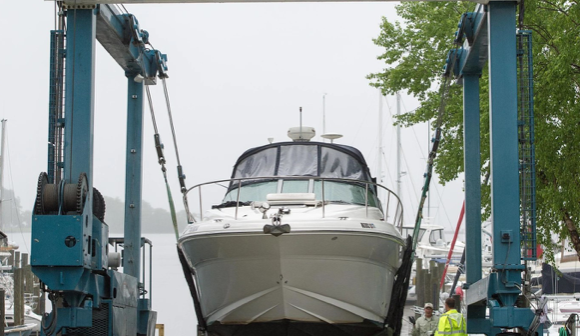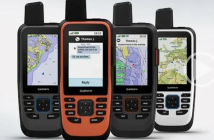It’s that time of year again; your boat is calling, and it’s time to get ready for a new season. Here’s a thorough spring commissioning checklist from BoatUS to help you get underway:
Before You Launch
- Check the condition of antifouling paint and repaint if necessary.
- Inspect all hose clamps for rust and replace as necessary. Double clamp fuel lines and exhaust hoses with marine-rated stainless-steel hose clamps. While not technically required, it’s wise to double clamp whenever possible on all hoses — especially those below the waterline.
- Inspect all hoses for stiffness, rot, leaks and cracking, and replace any that are faulty. Make sure they fit snugly.
- Inspect prop(s) for dings, pitting and distortion. Make sure cotter pins are secure.
- Grip the prop (on inboard drive systems) and try moving the shaft up and down and side to side. If it’s loose and can be wiggled, the cutless bearing may need to be replaced.
- Check the rudderstock to ensure it hasn’t been bent. Operate the wheel or tiller to ensure the steering works correctly. Check the rudder bearing and steering cable for unusual play or movement.
- Inspect the hull for blisters, distortions and stress cracks.
- Make sure your engine intake sea strainer (if equipped) is not cracked or bent from ice and is free of corrosion, clean and properly secured.
- With inboards, check the engine shaft and rudder stuffing boxes for correct adjustment. A stuffing box should leak no more than two or three drops each minute when the prop shaft is turning. Check the shaft log hose for deterioration and rusty hose clamps.
- Inspect, lubricate and exercise thru-hull valves. It’s a good idea to tie a right-sized wooden bung to the valve in case of failure.
- Use a garden hose to check for deck leaks at ports and hatches. Renew caulk or gaskets as necessary.
- Inspect and test the bilge pump and float switch to ensure they’re both working properly. Also inspect the pump’s hose.
- Check stove and remote LPG tanks for loose fittings, leaking hoses and properly functioning shutoff systems. Use the pressure gauge to conduct a leak down test to check for system leaks.
- Inspect dock and anchor lines for chafe and wear.
- If equipped, ensure that the stern drain plug is installed.
- After the boat is launched, be sure to check all thru-hulls for leaks.
Engines and Fuel Systems
- Inspect fuel lines, including fuel tank fill and vent hoses, for softness, brittleness or cracking. Check all joints for leaks, and make sure all lines are well supported with noncombustible clips or straps with smooth edges.
- Inspect fuel tanks, fuel pumps and filters for leaks. Ensure portable tanks and lines are completely drained of stale fuel before filling with fresh fuel. Clean or replace fuel filters and/or fuel-water separators if not done before winterization.
- Every few years, remove and inspect exhaust manifolds and risers for corrosion (for inboard-powered and inboard/outboard boats).
- Charge battery.
- Clean and tighten electrical connections, especially both ends of battery cables. Use a wire brush to clean battery terminals, and top off cells with distilled water (if applicable).
- Inspect the bilge ventilation intake and blower ducting for damage or leaks and run the blower to confirm correct operation.
- Test engine warnings and alarms.
Engine Outdrives and Outboards
- Inspect rubber outdrive bellows for cracked, dried and/or deteriorated spots (look especially in the folds) and replace if suspect.
- Check power steering and power trim oil levels.
- Replace anodes/zincs that are more than half wasted.
- Inspect the outer jacket of control cables. Cracks or swelling indicate corrosion and mean that the cable must be replaced.
- Inspect lower unit oil level and top off as necessary.
Read more at https://www.boatus.com/news-room/release/boatus-spring-commissioning-checklist-4




